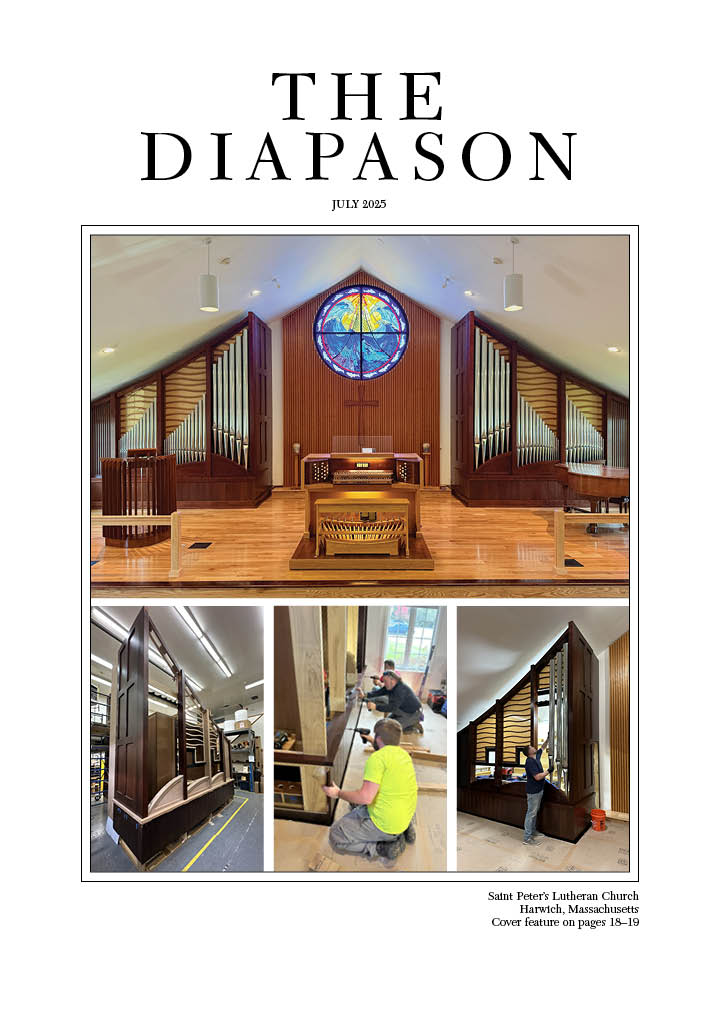A particularly valuable but previously neglected item from the archives of the Riemenschneider Bach Institute is a volume containing eleven nineteenth-century prints of keyboard works by J. S. Bach that was once owned by the pianist Clara Wieck Schumann. In June 2006, while doing research in the archives, Russell Stinson, Professor of Music at Lyon College, Batesville, Arkansas, discovered that this material was originally owned by Clara’s husband, the composer Robert Schumann. Robert Schumann’s hand appears in at least ten of these prints, and his annotations--which have never before been discussed--include analytical markings, organ registrations, and pronouncements on the authenticity of the music.
Schumann championed Bach as the greatest of all composers and acknowledged the baroque master as his most profound compositional influence, so it is perhaps not surprising that in the forty pages that preserve Schumann’s markings we most often observe him analyzing the thematic structure of Bach’s imitative polyphony, whether in free works or chorale settings. For example, in analyzing Bach’s setting of “Aus tiefer Noth schrei ich zu dir,” BWV 687, Schumann marked, in addition to each phrase of the chorale proper, every one of the roughly forty fugal statements. Much more unexpectedly, because he is not generally associated with the instrument, Schumann entered detailed organ registrations into Bach’s organ prelude in A minor, BWV 551, suggesting that he was far more serious about organ playing than has previously been believed. As someone who openly complained about the many erroneous readings found in the Bach editions of his day, Schumann also made sure to correct various typographical mistakes in these prints, including five instances in the G-major fugue for organ, BWV 541/2. Schumann presumably had been advised of these errors by his friend Felix Mendelssohn, who in 1840 dispatched an angry letter to the publisher (C. F. Peters) for allowing such a sloppy edition to circulate. Of particular interest are Schumann’s corrections of typos in the famous Toccata in F Major for organ, BWV 540/1, for these markings correspond exactly to an article that he published as editor of the Neue Zeitschrift für Musik.
Schumann was also dismayed that, in his opinion, certain works being published under Bach’s name in the early nineteenth century were in fact written by other composers. Twice in this volume he registered such doubts, scrawling on the title page of the D-minor toccata for harpsichord, BWV 913, zweifelhaft von Bach (“doubtful whether by Bach” and on that of the brilliant C-minor fantasy for harpsichord, BWV 906, schwerlich von Bach “hardly by Bach.” Somewhat amusingly, Schumann was wrong on both counts. The toccata may represent flawed juvenilia and the fantasy may sound rather like a Scarlatti sonata, but both pieces are undoubtedly genuine.
This source sheds considerable light as well on the Bach reception of Clara Schumann, as in three organ works she made numerous markings aimed at piano performance. One of these works, the chorale “Christ, unser Herr, zum Jordan kam,” BWV 684, with its flowing sixteenths for the left hand, naturally lends itself to piano performance. Following her husband’s lead, Clara rendered this piece in the manner of a nineteenth-century character piece for piano with a “thumbed” tenor melody.
Not coincidentally, the other two compositions--the Toccata in F Major and the Fantasy in G Major, BWV 572--are the same two Bach organ works that Clara’s dear friend Johannes Brahms most often played as a concert pianist. Indeed, this volume also preserves in Brahms’s own hand his piano-transcription markings for both works. Brahms definitely advised Clara on how to perform these pieces at the piano, and their annotations here represent, in fragmentary form, Brahms’s long-lost piano arrangements of these pieces. Clara and Brahms preferred to double the pedal line at the lower octave, a circumstance that often makes it difficult to play all the manual voices. In the case of the G-major fantasy, Clara added dynamic marks that enhance both the contrapuntal and harmonic structure of the music. Most remarkably, Brahms rewrote the manual figuration of the final section of the fantasy, and in so doing transformed the work into a piano showpiece.
Clara’s Bach book is a musicological treasure that greatly adds to our understanding of how some of the leading musicians of the nineteenth century responded to the model of Bach’s keyboard music. The volume therefore ranks as one of America’s most important Bach sources. Stinson is currently preparing a comprehensive study of the source, to be published in the journal Bach, and is seeking a publisher for a performing edition of the two piano transcriptions.
Russell Stinson discovers volume of 19th-century prints of Bach keyboard works
Russell Stinson


